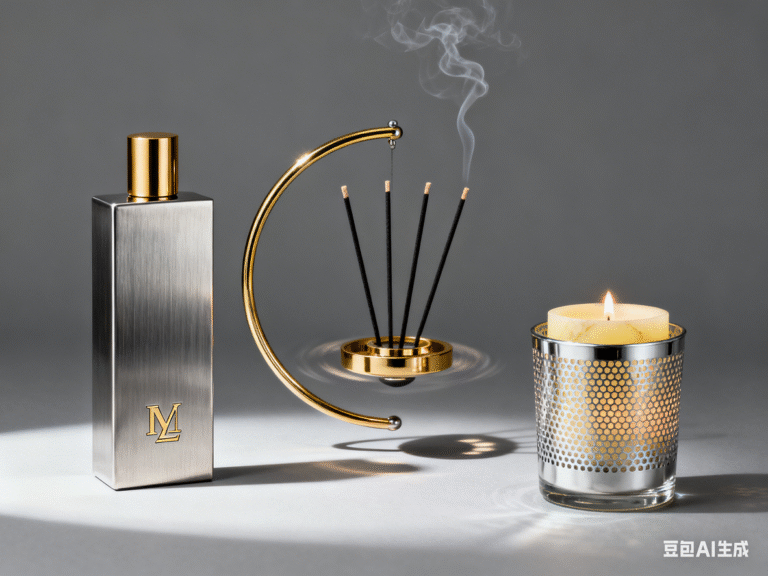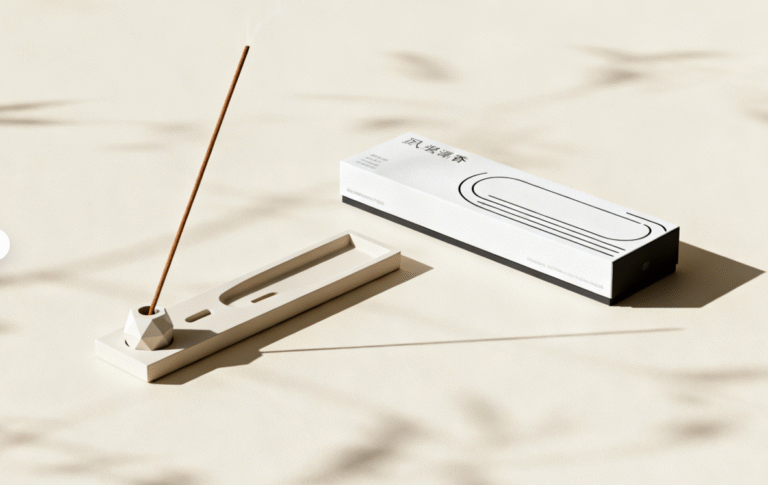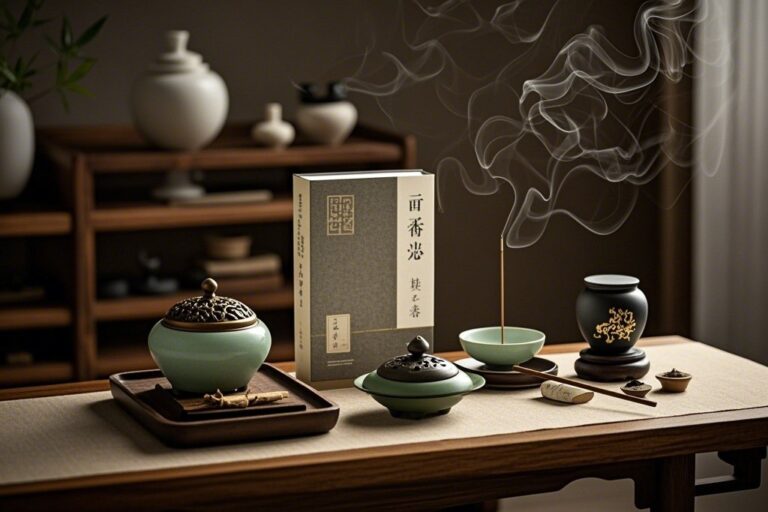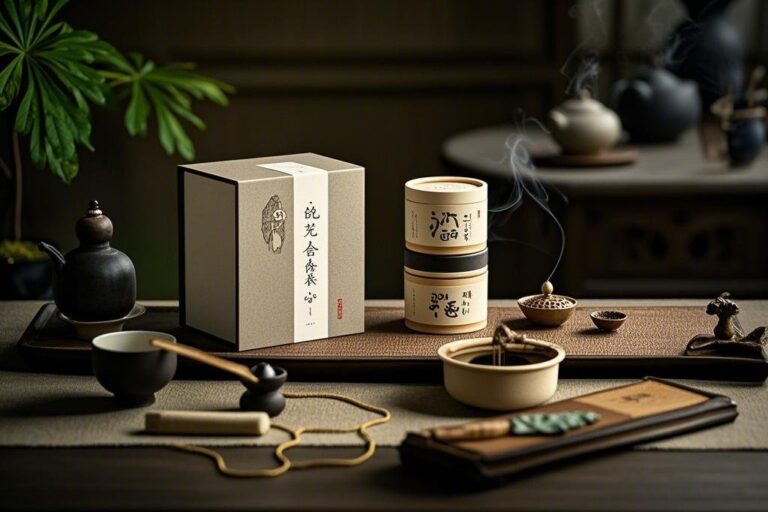Chinese Incense Culture: History, Spiritual Practices & Aromatic Traditions

Chinese incense culture is the Chinese nation in the long historical process, around the role of different aroma on people and personal needs, resulting in the production of various incense, incense concoctions, combinations, etc., and gradually formed a series of items, technologies, methods, habits that can reflect the uniqueness of the Chinese nation’s spiritual temperament, national culture, national traditions, aesthetic concepts, values, modes of thinking and worldview, system and concepts.
Incense culture permeates many aspects of social life, such as the history of incense culture; the production, concocting and compounding of incense medicine; the research and development of incense products; the production and use of incense utensils (utensils used for making incense) and incense utensils (tools used when using incense); incense and all kinds of cultural and artistic works, and so on.
What are the similarities and differences in the use of traditional Chinese and Western incense?
For the fragrance of the preferences and needs of human commonality, not only the Chinese unique, other countries and nationalities are also like incense, the difference is only the form of incense and incense to the different feelings only. This form and feel different, showing the cultural differences. Westerners use incense habits and forms, is consistent with the Western culture and cultural cultivation of the human character. It can be said that Westerners use incense to pay more attention to the direct, single function. For example, westerners for the production of incense, is to put the process on the classification and extraction of aroma. The use of more convenient, a spray can be. What they pursue is mainly the improvement of odor, to meet the needs of the sense of smell as the main purpose.
The purpose of Chinese people’s use of incense is, first and foremost, moral self-discipline and the nourishment of health and sex. In the traditional Chinese concept, fragrance is a symbol of beauty, nobility, good fortune and moral quality, and is the result of a high degree of harmony between man and nature, life, and man and society. Confucianism’s “self-cultivation, self-reflection, benevolence” and Taoism’s “Wu Wei” are important ways to perfect the personality, and wear incense, use incense is in this process of perfecting their own predetermined goals to reach the signs and reminders.
In addition to wearing incense, China’s most important form of incense is incense, is through the burning or heating of incense to make the aroma permeated in a specific space, in different environments to feel the different effects of incense on people. People use the process of incense, not only for people, but also to improve the environment in which people live. From the point of view of the five elements, incense has a positive help Yang’s work, “pure Yang gas, condensed as incense” is the definition of the ancient generation mechanism of aromatic plants, so burning incense is conducive to support the positive help Yang, but also a process of health and well-being.
Chinese incense, both full of cultural interpretation, full of artistic beauty to enjoy, but also full of mysterious process. In this process, people are not only pursuing the fragrant and pleasant aroma, but in that kind of warmth and elegance of the atmosphere, carried out again and again in the mind and nourishment, again and again in the cultivation of sentiment, again and again in the nature of the sublimation of wisdom, which is the Chinese and Western different cultural background in the use of incense on the different performance.
What is the essential difference between Eastern and Western incense culture?
Transmission of national and regional cultural forms and its national geography, lineage, habits, thinking qualities and history of the “unity is a lineage, incense culture is no exception. Chinese incense culture is built on the “unity of man and heaven” “sexual unity according to” think on the basis of a form of culture. She is based on five thousand years of cultural thought, in the process of natural incense and medicine organically combined, re-injected into the needs of the country’s cultural qualities and life, both deep cultural connotations, but also rely on people in the process of enjoyment of culture, amusement Yi sex to achieve the overall conservation of the body and mind. People in the process of enjoying incense, at the same time to get the cultural, aesthetic, gas and flavor of the multifaceted enjoyment of the process of people with incense at the same time is a process of self-cultivation, cultivation and health care process.
Westerners for the use of incense, is mainly reflected in the level of taste and remove the effect of odor, incense is only a distinctive taste items, so the Westerners on the study of spices, basically focusing on the study of fragrance and reproduction, and thus their use of incense tends to be simple, fast and outward-looking. Westerners do not pay attention to the role of incense in health care, health care, nourishing the body and mind, so the use of the process is almost no communication with life, the experience of mutualization. The process of using incense also shows the basic characteristics of fast food culture.
Is the now popular incense ceremony the traditional form of using incense in our country?
Nowadays, the popular concept and expression of incense is not the real tradition of China, it is the Japanese culture and life mode which is produced by the geography, culture and thinking mode of Japan after the Chinese culture was spread to Japan.
After the reform and opening up, with the development of China’s economy, people in the material life to meet the needs of the pursuit of spiritual life. And we have been separated from the incense life, began to appear in a small number of people’s lives. Since our own incense culture is almost invisible, when people see something similar to the national form, they are very surprised and cherish it, and with some not too strict propaganda, people mistakenly regard this culture, which has actually been completely Japanese, as our cultural heritage.
n fact, the “incense ceremony” circulating in the society nowadays, no matter she comes from Japan or China-Taiwan, is already the cultural expression of Japan, although there are still some of the traditional content and form of our country’s mark, but after all, it is the comprehensive embodiment of the factors of Japan’s geography, life, culture, customs and habits, aesthetic ideas, and has been passed down for thousands of years. China’s incense science in the use of incense concept, the pursuit of purpose, the use of incense in the form of a great difference, especially the deep, the essence of the pursuit is different.
How does the Chinese incense culture not talk about Dao?
The Dao, in our cultural conception, is the root of all life, a special state that contains information, matter and energy, and is highly harmonized, orderly and unending, and therefore ineffable. As Lao Tzu said, “Dao, can be Tao. Very Dao.” Therefore, the sages who take “gentle, good, respectful, thrifty and generous” as their attitude in the world will not talk about Tao. Even the moral reference and realization, but also known as the “body of the Road” even the ancient sages used to analyze “the connotation of the Road when the virtue” is also known as “close to the Road”. Ancient people recognized that a certain thing to do and in the natural laws of heaven and earth, and even can be forever, is only called “and in the Dao”. And will never be a specific skill, technology or cultural subjects called Dao.
Our country does not call the incense culture “incense Dao”, first of all, because people on the application of incense, is still only in the process of exploration and research, at best, according to the road, how dare you say Dao. And then it is because of the reverence for the “Dao”, the culture and even their own life behavior of the rigorous attitude, as well as the Dao of the humble attitude. Therefore, in history, people just call it “incense” or incense art. The term “incense culture” is what I boldly put forward in 2002 in order to explore and study traditional incense, and to trigger more people with knowledge to participate in the study and throw a brick to attract jade. Although many people questioned it at that time, the undeniable fact is that incense culture is a cultural phenomenon that has been passed down in our country for more than 5,000 years.
What is the relationship between incense culture and Chinese culture?
Incense culture is an important part of traditional Chinese culture and an invisible vein of Chinese culture. Fragrance culture and Chinese culture are fundamentally based on the “holistic view of man and heaven” and “holistic view of life”, based on the self-improvement of the personality as a precursor to the moral cultivation of the basis of the establishment of the nature of the perfection of the nature of the unity of man and heaven, so as to reach the wisdom of the ultimate goal of the cultural system. The cultural system that leads to the ultimate goal of wisdom. Therefore, the pursuit of “perpetuating the flame of immortality” and “perpetuating the fragrance of all ages” is the concrete embodiment of this cultural system in terms of human attitudes. Starting from the nourishment of nature, the body and mind to carry out comprehensive conservation of incense culture, in essence, is one of the important means to achieve their goals and values of life. It is this attitude of the sages, to ensure the healthy development of the Chinese nation for 5,000 years, to ensure that the Chinese culture for 5,000 years, a lineage, the flame will continue forever.
The ancient people’s quest for “the wholeness of man and heaven” was in fact a study of how to coexist with nature in depth from the perspective of mankind’s harmonious coexistence with heaven and earth and nature, and from the process of symbiosis and coexistence with nature, to realize the law of permanent survival and development. “The Doctrine of Life is a study that explores the exchange and meeting of the information system that dominates life, i.e., nature, with the information of nature, and the deep relationship between nature and the body of life in symbiosis and mutualization. Fragrance is regarded as an important component of the communication channel between man and nature, an important factor conducive to the sublimation of life, and an invisible vein in traditional culture. If we are quiet, it is not difficult to find the real Chinese cultural works, all imply the noble and elegant aroma of the inner quality, but also hidden in the beautiful figure of incense. Whether it is a thousand words of the Han Dynasty Fu, or Tang poetry and Song lyrics, as well as the sound of ancient music, as well as unique Chinese characteristics of the art of painting and calligraphy, all of which are the Chinese cultural heritage of the outward appearance.
What is the relationship between incense culture and the development of our history and culture?
Ancient gentlemen have four elegant – fighting incense, tea, flower arrangement, hanging paintings, in which the skillful mastery of incense as the first talent. Chinese literati love incense, and from ancient times to the present are participants and promoters of the development of incense culture, the development of different periods of history and culture has an important role that can not be ignored. China’s cultural and artistic works have “Boshan although cold incense still exist” such a let a person refer to the endless, the understanding of the profound connotation, and even can be called “Chinese cultural traits”. Literati incense about the Tang and Song dynasties is very popular, reading to incense as a friend alone to incense as a companion, clothing needs to incense smoke, was needed to incense warm; public hall above the incense to bake up the solemnity; under the Pine Pavilion is to incense to show that its Confucianism; tuning the strings to play the zither, incense incense incense can be a heart to guide the rhyme; tea and Taoism, calligraphy and painting will be friends with the incense for the gathering.
In addition to burning incense, incense and medicine in the lives of literary people also have many wonderful, such as the book set or smoked layer of vanilla to avoid insects to musk, lobster, cloves and other into the ink, there is a “fragrant ink”; incense bark for paper, there is a “scented paper” (honey-scented paper, scented paper skin); to Lung brain, musk into the tea, there is a “fragrant tea” and so on. Literary people will be their favorite incense written into the read, written into all kinds of academic works, into the history of countless. In some prosperous historical period, people’s description of the incense at the same time also sends a message of hope for the political situation at the time, incense has invariably become a record of the important symbols of history and culture at all stages!
How did the ancient Chinese literati use incense?
Burning incense, in the minds of Chinese literati is an elegant thing. Mencius said: “for the nature of the desire, can not be obtained and longevity.” It seems that Mencius not only like incense, and has its theoretical basis, people like incense from the bottom of their hearts. With certain economic conditions of the literati, not only with incense, but also find ways to make their favorite incense, to use the incense to burn out the interest to burn out the mood, burn out the mood, burn out the learning. In this way, not only the production of incense, the use of incense, even the method of burning incense is also the scope of the study of the literati. We can see the great view from Yang Wanli’s “burning incense in seven words”. The poem reads.
Porcelain is made into pots and pans that are blue in water, and silver is cut into leaves that are as light as paper.
No text, no martial arts fire power, close your curtains wind can not afford
The poet burns the ancient dragon’s saliva, but the incense does not see the smoke.
Soo Xin suddenly open wipe Lee demolition, low dragon musk and sink sandalwood.
I have known the taste of the mountains and forests all my life, but I can’t help this fragrance is very charming.
Huler rush to get steamed wood rhinoceros, but as a scholar really rich.
Why did ancient Chinese folk burn incense?
Although incense is a metaphysical elegant things, the price of the best incense more than gold, but burning incense, incense in the ordinary people’s homes is also a daily thing. Folk usually in festivals, to burn incense to achieve the purpose of praying for the well-being of the people, seeking peace. Burning incense probably begins on the eighth day of the Lunar New Year, the “Lunar New Year Sacrifice” or the day Buddha became a Taoist priest, which is the time to begin the main rituals of celebrating a good harvest, thanking ancestors and deities (including the gods of the door, the gods of the house, the gods of the house, the gods of the hearth and the gods of the wells), and so on, and on this day, people also need to get rid of epidemics, and to pray for good health; After the eighth day of the Lunar New Year, on the 23rd day of the month of Lunar New Year, also known as After Lunar New Year’s Eve, the 23rd day of Lunar New Year, also known as the “small year”, is the day of the folk sacrificial stove, but also the need to burn incense; New Year’s Eve, the fifth day of the first month of the birthday of the God of the Road, the first month of the fifteenth day of the New Year’s Festival, the second day of the second month of the Spring Dragon Festival (dragon picking up the head), and the Cold Food Festival, Qingming Festival, the Summer Festival, Tian Kuang Festival, the Festival, Tanjing Festival, Tanabata, the Festival, the festival, the Festival, the festival, the Festival, the Festival, the Festival, the Festival, the Festival and many other festivals, are to pray for blessings. There are many other festivals, all of which are days for praying for blessings and burning incense.
In addition to special festivals, people in the event of red and white wedding, the birth of a new child, building a well, successful in the imperial examinations, contracts and contracts, natural and man-made disasters, wealth and harvest, etc., must be held accordingly rituals, burning incense is one of the rituals must be carried out on the program. Of course, some people or merchants to honor the God of Wealth or other deities also need to burn incense from time to time.
What are the forms of folk incense burning?
Chinese people’s attitude towards burning incense is twofold. On the one hand, they are in awe of the religion and do not dare to offend it; on the other hand, they have a strong utilitarian coloring, seeking to burn incense in order to ask for God’s blessing. Burning incense, often referred to as worship in Jiangnan, Hong Kong and Taiwan, is the most common way of honoring the gods. The most common way to honor the gods is to light up joss sticks and candles, pay a few obeisances to the god, or for the more devout, kneel down and ah ah ah a few times, while silently praying in one’s heart.
There are many folk customs of burning incense, one of which is the so-called burning of the first incense. The first incense is the first incense, especially the first incense of the New Year. The people believe that the first incense has the greatest merit, can get the most blessings, so often compete to burn the first stove spring, if it is the new year (the first day of the first month of the lunar calendar) burn the first incense, pious joss stickers often in the new year’s eve of the midnight on the early waiting, in addition to burn the first incense, some places the people also have to burn the custom of the ten temples of the incense. Is in the morning of the first day, carrying a basket of incense, continuously burned all around the ten temples. The intention is similar to burn the first incense.
Folk burn incense another more special practice is to burn incense. The so-called burning incense is pointing to a temple and other places, a step or a few steps a worship. For example, Hunan Hengyang area on the Nanyue Hengshan burning incense custom, generally is the incense with a small stool, on the incense case, a few steps a worship, gradually up the mountain.
What should I pay attention to when using incense for rituals?
Sacrifice is a very ritualistic activity, and there are basic requirements and norms for the use of incense that are worth noting.
Maintaining the purity of the heart, sincerity, respect, purity, compassion, dedication, trust, feeling, repentance, etc., is one of the most important factors in the use of incense for rituals. Let a good heart through the look, gesture, action, to achieve the external dignity and reverence. Praying for the happiness of others, volunteering for the good, being close to the Way, establishing merit and virtue, and contributing to the benefit of others and all things in heaven and earth. Meditate on or recite the contents of the prayers and the deities to which they are dedicated.
Strengthen the mind with appropriate postures and movements to promote resonance between the body and mind, such as bowing the head, clapping the palms together, bowing, kneeling, prostration, etc. The height of the incense burner should not be higher than the height of the incense burner.
The height of the incense burner should not be higher than the statue of the deity to be worshipped.
Appropriate offerings such as incense, flowers, lamps and candles should be placed.
Pay attention to the time of the day when incense is to be offered, except for those who have formed the habit of burning incense every day, and for the general public, try to keep a steady rhythm, such as the first, third, thirteenth, fifteenth, and festive seasons of the lunar calendar.
Offer incense at appropriate places, such as temples, monasteries and temples, home offerings, Buddhist shrines, and other places of purity and tranquility.
Choose good quality incense. Use natural incense as much as possible. The quality of incense used in rituals is more important than the quantity. “Wonderful incense connects the three worlds”, and a single stick of clean incense is better than thousands of bad ones. Ancient people usually on the incense rituals, heavy with “fragrance” to enjoy the species, and people do not realize that the rituals in the form, and more to “smoke” for the expensive.
What is the fragrance of the recent past like?
Chinese incense culture stretches for thousands of years, along with the trajectory of traditional Chinese culture through the process of enlightenment, development, peak multiply and retreat. Due to the profound changes in society, once a long time to support and promote the development of incense culture of the literati class in the way of life and values have changed dramatically, has long been integrated into the study room incense also gradually far away, lost the connotation of the beautification of life, cultivation of the spirit. At present, incense is mainly used as a ritual to stay in the temple altar.
In the 20th century, with the development of science and technology, the development of synthetic spices and chemical processing technology has changed Chinese incense to a large extent. Although some of the forms and methods of traditional incense have been preserved, there has been a significant interruption in the transmission of the core craftsmanship, and the materials, formulas and quality of the incense have declined greatly. To this day, it is difficult to find traditional incense made according to ancient methods.
And most of the modern people will burn incense as a form, just burn incense, see incense, rather than tasting incense, appreciate incense, also do not care about the quality of incense. So manufacturers are willing to make, merchants are willing to sell, customers are willing to buy. The quality of incense is mixed, the name is more and more fancy, packaging is also more and more beautiful, but often is not under the gold and jade package incense.
Thus, people gradually no longer know how the ancient incense is a form, no longer know the ancient Chinese used to be so like incense, and no longer know why the ancients like incense.





